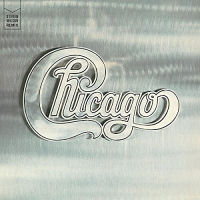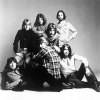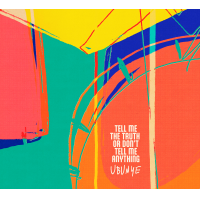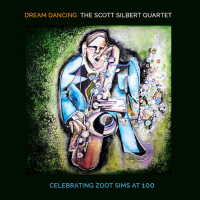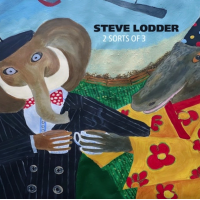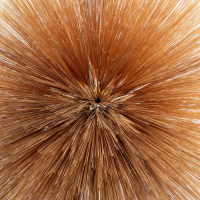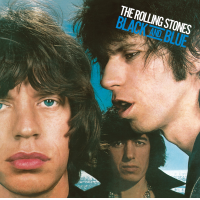Home » Jazz Articles » Extended Analysis » Chicago: Chicago II (Steven Wilson Remix)
Chicago: Chicago II (Steven Wilson Remix)
Why "almost"? Well, since the Quadio remasters are at 24-bit/192KHz, and despite being released on hard media on CD only, Wilson's Chicago II remix is available as a digital download at a lower but still high resolution rate of 24-bit/96KHz, we're not talking exactly apples to apples. That said, it's a myth that 24/192 sounds "twice as good" as 24/96, and whatever differences there may be from the increased resolution of Quadio, Wilson's ability to go back, not to just the original master tapes used with Quadio but, instead, the original multi-track tapes—allowing him to rebuild the mix from the ground up—has resulted in an even more revealing listen than the admittedly fine version of Chicago II found in the Quadio box.
Chicago II comes from a group that may largely be thought of as a radio-friendly pop group responsible for early hits like the hard-rocking, enigmatically titled "25 or 6 to 4" and romantic ballad, "Colour My World." "Baby What a Big Surprise," was another relatively early pop hit from the group's ninth album of all-original studio material, 1977's Chicago XI. It was a transitional album curiously not included in Quadio; had it been, the box set would have represented the band's first full decade, from its beginnings as Chicago Transit Authority in 1967, through to guitarist/vocalist Terry Kath's tragic death, age 31, of an accidentally self-inflicted gunshot wound in early '78. Quadio would also have been a self-contained box set of every studio album that the guitarist recorded with the band that changed its name to simply "Chicago" for its second album, as well as every studio recording the band made with producer James William Guercio.
But listening to the radio—even the more experimental, stylistically unfettered FM radio stations of the late '60s and early '70s, where it was possible to hear, back-to-back, music by The Byrds, John Coltrane and Pink Floyd—never told the complete story of this horn-driven, rock-infused group from the USA's "Windy City."
Not that there's anything wrong with it, but Chicago, especially during its first decade, was far more than "just" a pop group; progressive rock is largely considered a British invention, emerging out of mid-to-late '60s psychedelia with bands including King Crimson, Yes, Genesis, Soft Machine, Caravan, Gentle Giant and Hatfield and the North, but it was also an emergent form elsewhere in the world..certainly in the US with groups artists like Frank Zappa and groups including Chicago, The Flock and others.
There may have been few synthesizers and mellotrons to be found on Chicago recordings, but in the original septet's combination of deep jazz vernacular, pulsing rock rhythms and classical infusions, it absolutely was a progressive group, in particular on its early, Kath-era recordings. Many progressive fans consider the initial triptych of 1969's Chicago Transit Authority, 1970's Chicago II and 1971's Chicago III—like all of its early albums, initially released on Columbia but later picked up by Rhino, who is responsible for both Quadio and Wilson's remix of Chicago—as the group's most "progressive," but the truth is that literally every studio album in which Kath was involved combines radio-friendly (but oftentimes still sophisticated) pop tunes with more exploratory pieces; for every "(I've Been) Searching So Long" that entered the Billboard Top 10 Pop Singles chart, albums like Chicago VII, which also included absolutely experimental instrumentals like "Devil's Sweet" and "Italian from New York," also made it to the number one slot in its Pop Albums chart.
But, in many ways, Chicago II remains the group's early pinnacle. Chicago Transit Authority was a a fine debut, but it's double-LP length—a risky format for a nascent band but one with which the group would successfully continue through Chicago III and, once more before Kath's passing, with Chicago VII—meant that there was the potential for some filler...some excess, like Kath's feedback-laden, seven-minute "Free Form Guitar." Chicago II, on the other hand, is the epitome of precision and concision. Aside from 1971's whopping, four-LP Chicago IV: Live at Carnegie Hall, the group's double albums all fit onto single CDs, but Chicago II is significantly shorter than its predecessor...a full ten minutes shorter, in fact, clocking in at just over 67 minutes. While there are continuous, multi-part suites and plenty of space for solos, the writing is considerably tighter, even when it's exploring then-less travelled paths; despite often being parts of multi-movement, continuous suites, half of its 23 tracks don't break the three-minute mark, while a full third clock in at less than two minutes.
Chicago emerged at a time when "jazz-rock" and horn-led bands were on a roll, from fellow Americans Blood, Sweat and Tears, The Flock and Dreams to Britain's If and slightly more diminutive but no less important to the sub-genre, Colosseum. Still, with almost everyone in the band a strong writer—Chicago II dominated largely by compositions from guitarist/vocalist Kath, keyboardist/vocalist Robert Lamm and trombonist James Pankow, with single contributions from bassist/vocalist Peter Cetera and woodwind multi-instrumentalist/vocalist Walter Parazaider—Chicago distinguished itself. Each had his own identifiable style and yet, when all the compositions were brought together the group sound was cohesive and consistent, even as there was plenty of unpredictability blended into the mix.
Barring the original first side of the two-LP set, which consists of four discrete songs, Chicago's remaining sides are largely based around multi-movement suites, one per side, coupled with one or two songs positioned on either side. Kath's surprising "Memories of Love" opens with three classically informed instrumental miniatures co-written with Peter Matz (who'd already achieved fame and award-winning fortune for his work as a performer, composer, arranger and conductor for artists ranging from Noël Coward and Barbra Streisand to Marlene Dietrich). But it's the four-minute final movement, which resolves into a string, woodwind and brass-driven vocal feature for Kath, where the guitarist (as if he hasn't already done so with the first three movements) demonstrates that he was far more than the virtuosic guitarist and soulful singer introduced on Chicago Transit Authority; he was also a sophisticated conceptualist. His loss is still felt today, nearly forty years later.
The funkier "It Better End Soon" is, alternatively, a suite largely composed by Lamm but, with an extended, set-defining, ostinato-driven flute solo from Parazaider on "2nd Movement" and Kath's gritty, similarly vamp-based vocals driving "3rd Movement," Lamm's band mates also get co-writing credits. Still, it's the eminently catchy "1st Movement" and brief reprise in the "4th Movement," with its boldly structured horns and beautifully harmonized vocals bolstering Kath's visceral lead singing that make this ten-minute suite so attention-grabbing.
But it's Pankow's "Ballet for a Girl in Buchannon"—the seven-movement suite that follows Lamm's more pop-centric, Beatles-esque "Wake Up Sunshine," that demonstrates the band's ability to not just write pop tunes and more complex pieces of instrumental and harmonic sophistication, but a rare ability to marry them in seamless fashion, rendering the whole truly greater than the sum of its parts. The suite's opener—sung by Kath and featuring a brief but mind-bending solo from the guitarist—was a hit for the band, reaching #9 on the Billboard Pop Singles chart along with the suite's fifth piece, the arpeggio-driven ballad "Colour My World" (#7) and Lamm's "25 or 6 to 4" (#4).
Even shorter pieces like "Fancy Colours" manage to pack a lot into a relatively brief five minutes: from its atmospheric opener, initial horn-buttressed 4/4 vocal section (sung by Cetera) and more buoyant 3/4 chorus that leads into a swinging instrumental segment featuring Parazaider (again on flute) and, finally, a Hammond organ-drenched guitar solo that morphs into a brief solo from drummer Daniel Seraphine, its final 45 seconds consist of nothing but sustained, drum-punctuated horn shots...and nothing more. Not exactly your typical pop band.
Elsewhere, Pankow's eminently catchy, gospel-tinged "Moving In," which opens the record and again featuring Kath's soul-drenched vocals, opens the album with surprising breadth, moving into a swinging middle section with marvellously arranged horns and a shrieking saxophone solo from Parazaider that demonstrates even greater stylistic breadth, followed by similarly brief but impressive solos from trumpeter/vocalist Lee Loughnane and, finally, Pankow.
As for the sonics, especially compared to the Quadio version, but also compared to Rhino's 2002 CD remaster? Just "A/B'ing" Wilson's remix of "Movin' In" with the remastered-only version in the Quadio box reveals exactly what being able to rebuild the mix from the ground up allows. As he explains in his brief liner note to the CD—and, by the way, why is the CD booklet not included, in PDF form, with the more expensive high resolution download, as is done with digital-only releases from labels including ECM, Moonjune and Cuneiform?—Wilson respects the original mix as he rebuilds, but is able to bring out more "texture, power and subtleties."
Yes, it's easy to pinpoint the obvious stuff, but on "Movin' In" what shines most in Wilson's new mix is, first and foremost, Kath's rhythm guitar work, which is fluid, loose and spontaneous; not prescribed parts that are played time and again but are, instead, interpreted differently each time. Beyond that, Cetera's bass is more punchy and less boomy than on the Quadio remaster, and literally everything—from Seraphine's rim shots to the rich complexion of trumpet, trombone and saxophone that drive the horn arrangements leading into the solos—is crystal clear and easy to delineate while, at the same time, feeling more cohesive than ever. From the first few seconds everything feels somehow cleaner while, at the same time, not just avoiding any loss of its original power but actually making this new mix more puissant, more dynamic, more nuanced.
That's not to say the Quadio box is bad. Far from it; if anything, its high res remasters—in both stereo and quad surround mixes—set a new gold standard for the early Chicago discography...until Wilson's Chicago II came along. For those who picked up the Quadio box, fear not: if Wilson does any other titles (currently not known), it's highly unlikely that he would remix the entire set of albums included in the Quadio box as he only accepts remix gigs for albums that matter to him. That said, those with the Quadio box who aren't married to quad and who want a version of the group's second album that surpasses even Quadio's fine remasters may find themselves drawn to Wilson's superior mix; and as terrific as it sounds at 24/96, the CD also sounds superb.
All of this to say that remixing and remastering can be very good things, bringing power, depth and clarity to a favored classic. But in either case they've got to be in the right hands. Since 2009, when Wilson first came onto the radar as a remixer of other artists' albums with the first three of King Crimson's 40th Anniversary Edition series—1969's In the Court of the Crimson King, 1970's Lizard and 1975's Red—Wilson has demonstrated particularly astute ears when it comes to respecting an album's original mix while bringing it sonically into the new millennium. And if he's only going to remix one Chicago album, then Chicago II is most definitely the one deserving of his touch; that his remix of Chicago II—whether it be the 16-bit/44.1KHz CD or 24/96 download—supersedes Quadio's remaster of the same album is but one more example of how he has been taking classic albums, from prog to pop and anything in-between, making them sound the way they should...certainly, at least in some cases, closer to how the artists originally conceived them.
It would be terrific to hear, in particular, his take on Chicago III and V through VII. In the meantime, even those who invested in Quadio will find good reasons to consider checking out Wilson's new stereo mix of Chicago II...if not the group's absolute best (a debatable subject), then certainly amongst the group's top few. A true classic now sounding as transparent, pristine, punchy, powerful, dynamic...and subtle...as when it was first recorded, Wilson has reinvented Chicago for the 21st century...and done a particularly outstanding job at it.
Track Listing
Movin' In; The Road; Poem for the People; In the Country; Wake Up Sunshine; Bullet for a Girl in Buchannon: Make Me Smile, So Much to Say So Much to Give, Anxiety's Moment, West Virginia Fantasies, Colour My World, To Be Free, Now More Than Ever; Fancy Colours; 25 or 6 to 4; Memories of Love: Prelude, A.M. Mourning, P.M. Mourning, Memories of Love; It Better End Soon: 1st Movement, 2nd Movement, 3rd Movement, 4th Movement; Where Do We Go From Here.
Personnel
Chicago
band / ensemble / orchestraPeter Cetera: bass, lead and backing vocals; Terry Kath: electric and acoustic guitars, lead and backing vocals; Robert Lamm: piano, Hammond organ, Hohner Pianet, lead and backing vocals; Lee Loughnane: trumpet, flugelhorn, background vocals; James Pankow: trombone, brass arrangements; Walter Parazaider: saxophones, flute, clarinet, background vocals; Danny Seraphine: drums, percussion; Peter Matz: orchestrations and co-arrangements (15-17).
Album information
Title: Chicago II (Steven Wilson Remix) | Year Released: 2017 | Record Label: Rhino
Tags
About Chicago
Instrument: Band / ensemble / orchestra
PREVIOUS / NEXT
Support All About Jazz
 All About Jazz has been a pillar of jazz since 1995, championing it as an art form and, more importantly, supporting the musicians who make it. Our enduring commitment has made "AAJ" one of the most culturally important websites of its kind, read by hundreds of thousands of fans, musicians and industry figures every month.
All About Jazz has been a pillar of jazz since 1995, championing it as an art form and, more importantly, supporting the musicians who make it. Our enduring commitment has made "AAJ" one of the most culturally important websites of its kind, read by hundreds of thousands of fans, musicians and industry figures every month.


